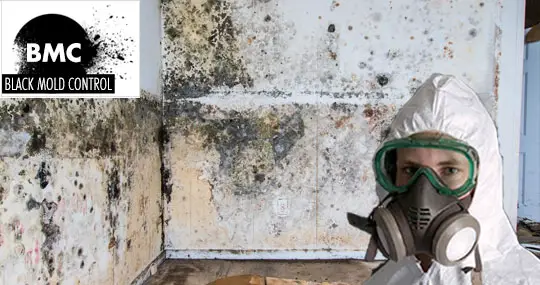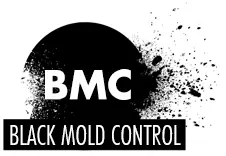Mold is a homeowner’s worst nightmare, but that doesn’t stop many homes from succumbing to mold remediation each year. The good news is that mold remediating services can usually fix the problem, as long as the damage hasn’t compromised the structure’s safety and stability. It’s important not to delay when you have mold. The sooner you take steps to remediate, the better your odds of saving your home and belongings.

Table of contents
Remediation vs removal
When someone first discovers mold contamination in their home or commercial space, they often want to know what the difference is between remediation and removal. These terms are often used interchangeably, even though they sound like two different services. Removal – like the name implies – refers to the total removal of the contaminants and spores from a building. But due to the microscopic nature of spores, removal is impossible. Instead, your best bet to make your home safe again is mould remediation.
When should I call a remediation specialist?
When it comes to removal, the sooner, the better. Mould contamination”s won’t clear up on its own, so the longer you put off beginning the removal process, the more it will spread and cause damage to your home and health. It’s important to stay vigilant and keep an eye out for signs of contamination around your home. Here are a few red flags that active growth is taking place in your home:
Dark stains or splotches
Dark stains are a bulls-eye for contamination. They also happen to be one of the most obvious signs of mold activity in your home or commercial office. You’re most likely to notice mold stains on your walls, ceilings, and crown molding. These stains are usually black, brown, or gray in color. Unlike mildew, you can’t wipe mildew off the surface since it penetrates into the material.
Unpleasant, musty smell
Now that you know what it looks like visually, you should also familiarize yourself with what it smells like. Mold – like mildew – has a dank, musky smell. You’re most likely to notice the odor in damp spaces like your basement, attic, and crawl space. Oftentimes you’ll smell it before you can see it with the naked eye.
Recent flooding or water damage
It’s very common for houses to experience mold following flooding. If you’ve recently experienced a flooded basement, keep an eye out for the telltale signs.
Allergies
Mold releases toxic spores into your home’s air supply. When you breathe this air into your lungs, it can trigger an allergic response or respiratory distress. Coughing, sneezing, and sore throat or all common symptoms. Some people have even reported experiencing headaches, fatigue, and flu-like symptoms.
Remediation companies: how do I select the right one?
There are a lot of mold remediation companies out there, as well as organizations claiming to offer remediating. Not all remediating companies are made alike. Before you call a company, do a little background research to make sure they are fit to handle your home’s problem.

Companies that claim to offer “removal” should raise an automatic red flag. Since removal isn’t possible, the company may not be as legitimate as they claim to be.
A few other factors to consider include:
- Quality of service
- Reviews
- Cost
- Proximity to your home
- Do they have any certifications?
Remediation certification
Remediation professionals can earn a certification to demonstrate their skills at safely and effectively handling contamination. EPA also offers a mold course for Environmental and public health professionals. [External link: EPA.gov]
What services do remediation companies offer?
Mold remediation companies use a variety of techniques and technologies to clean up contamination. These include fans, antimicrobials, antibacterials, and more.

Remediation process
The professionals follow careful steps to clean up infested spaces. If you need remediating, here’s what you can expect to happen:
Step 1: Inspection and assess the damage
When the professionals arrive at your home, the first thing they’ll do is try to get an idea of the damage. They’ll do this by performing a careful inspection of the affected area to see how far the contamination has spread and how much damage it’s caused. Sometimes it’s hidden from view, so the professionals use specialized equipment to detect it.
Step 2: Containment
To stop the contamination from spreading, steps must be taken to contain it. The professionals use advanced procedures to isolate the infected area, such as physical barriers and negative air pressure. Containing the infestation will prevent the spores from moving as the damage is cleaned up and removed from the area. Your heater, air conditioner, and ceiling fans will have to be shut off during the clean-up.
Step 3: Filtrate the air
Filtration equipment is used to capture microscopic spores and particles from the air. Air scrubbers and vacuums catch the spores and prevent them from spreading to other areas during the clean-up.
Step 4: Remove infected materials
To keep the infestation from bouncing back with a vengeance, anything in your home that affected needs to be either cleaned or disposed of. Unfortunately, porous materials like drywall and carpeting are almost impossible to clean and should instead be removed and destroyed.
Step 5: Clean furniture and belongings
For everything else, like furniture and belongings, they’ll use antifungal and antimicrobial treatments. Curtains and clothing, although porous, can usually be saved if the damage isn’t extensive.
Step 6: Restoration
This step isn’t usually necessary for mild infestations. However, heavy infestations where drywall, carpeting, and subfloor are removed will need to be restored. In the most severe cases, reconstruction of entire rooms may be necessary.
How long does remediation take?
The time it takes to complete the remediation process depends entirely on the extent of the infestation. It’s important to consider factors like how much contamination is in the building, where it’s located (behind walls, beneath the carpet, etc.), and what surfaces or materials it’s growing on. Simple jobs can take as little as a day, while more extensive work can take up to 5 days, not counting the restoration work that may follow remediating.
Attic
Attics are a common area for infestations since the room sits right below the roof. Leaky roofs allow water to seep into the house from rain and melting snow. This water then soaks into the structure of the attic and creates the perfect environment for infestations to take root.
Basement
A basement can be damp and dark, two things that spores love. While a basement normally isn’t damp enough to facilitate active growth, a leaky or flooded basement can create an ideal situation for spores to flourish in. Read our in-depth article about: Basement mold.
Crawl space
Like basements, a crawl space is a small enclosed space built beneath a home. Your crawl space should be clean and dry at all times to help prevent contamination.
Mold remediation cost
When you discover mold growing in your home, it’s important to get rid of it fast. Putting it off can lead to extensive damage and costly repairs. Although the price tag for remediating service may sound high at first, keep in mind that it’s much cheaper to deal with contamination upfront than to wait until the damage spreads. On average, remediating costs anywhere from $500 to $5,000 – but the cost depends on the extent of the contamination and the size of the space you need to be remediated.
Here are a few benchmark costs:
- Price to remove contamination from a crawl space: $500 to $4,000
- Price to remove contamination from crawls space, walls, ducts, and attic: $2,000 to $6,000
- Cost of repairing extensive structural damage: $10,000 to $30,000+
Compare quotes for mold remediation companies!
Not all remediating companies are made alike, and some charge different prices for the same job. We recommend getting three quotes from reputable companies so you can compare and contrast them for the best price. To get started, simply call up a local company or fill out a form online.
